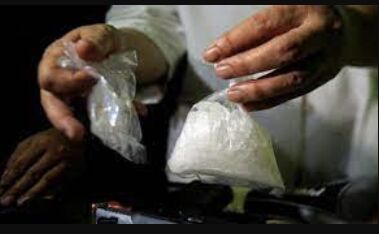Crystal Methamphetamine Crisis Sweeps Jordan, Threatening Public Health and Livelihoods
The National Centre for the Rehabilitation of Addicts in Jordan struggles to cope with the increasing number of patients seeking treatment for crystal methamphetamine addiction, a highly addictive and dangerous drug. Smuggling networks are diversifying their operations, resulting in a rise in crystal meth shipments across the border from Syria. The drug's accessibility has increased due to its lower price, leading to a surge in abuse particularly in low-income areas. The government and healthcare professionals are working to raise awareness and implement comprehensive measures to address the escalating public health crisis.
Crystal Methamphetamine Abuse Surges in Jordan, Threatening Public Health The National Centre for the Rehabilitation of Addicts (NCRA) in Jordan is struggling to keep up with the rising number of patients seeking treatment for addiction to crystal methamphetamine. Cases of crystal meth abuse have been on the rise throughout the country, with the drug proving to be even more addictive and dangerous than the widely-available captagon.
One patient at the NCRA, Ahmad, shared his experience with crystal meth addiction, revealing how the drug transformed him into a different person. He became paranoid and aggressive towards his own family, ultimately losing his job, home, and their trust.
Ahmad's story is not unique, as doctors and scientists confirm that crystal meth severely affects the brain's structure and function, leading to radical changes in behavior. The head of the rehab facility, Raed Bader, estimates that approximately three patients are admitted daily for crystal meth abuse, often combined with other drugs like captagon, cocaine, and hashish.
Hundreds more test positive for meth each month but choose not to stay for treatment, emphasizing the alarming increase in drug use. Notably, crystal meth is not only infiltrating Jordan through ground trafficking but also via "narco-drones" crossing the border from Syria. Authorities have already intercepted nine such drones this year, confiscating significant amounts of crystal meth and captagon.
Unlike captagon, which is primarily trafficked to Arab Gulf countries, crystal meth is predominantly destined for local consumption, driving down its price significantly. In 2018, a gram of crystal meth cost about $100, while now it sells for as low as $35, making it more accessible to users.
The rise in crystal meth shipments across Jordan's northern border is indicative of smuggling networks diversifying their operations, seeking to increase their profits. Iran and Afghanistan are the primary sources of crystal meth, with smaller amounts likely being produced in factories in southern Syria under the supervision of the Syrian military.
The impact of crystal meth abuse is particularly visible in East Amman, a lower-income area notorious for drugs and crime. Drug use, including crystal meth, is rampant among the local population, with almost every man above the age of 20 being involved. For many, taking stimulant drugs like captagon and crystal meth is seen as necessary to endure demanding hourly-wage and labor-intensive jobs.
These drugs provide energy and increased productivity, but the harm they cause is far greater than any short-term benefit. The surge in crystal meth abuse in Jordan presents a ticking time bomb for public health. The government and healthcare professionals are working to raise awareness about the dangers of this highly addictive substance. However, the numbers of drug users keep increasing, necessitating more comprehensive measures to address the root causes of the problem. With continued efforts, it is hoped that individuals like Ahmad can regain control of their lives and contribute positively to society once again.




